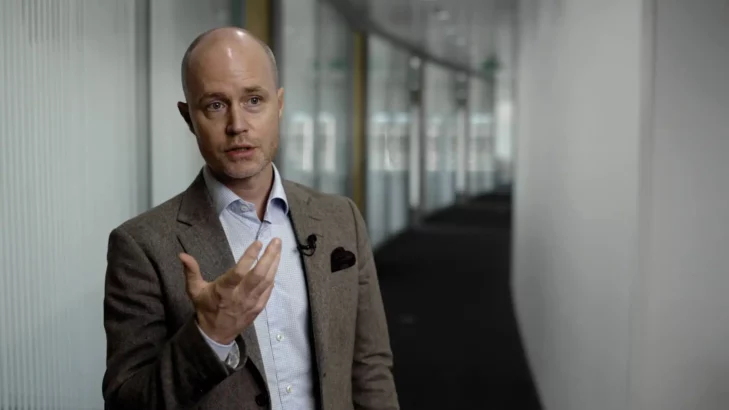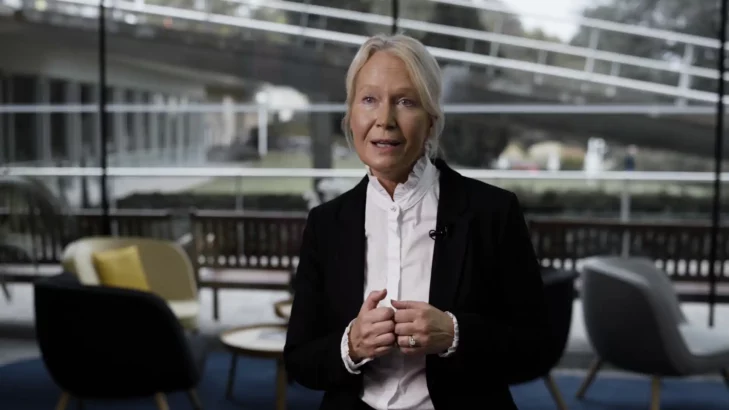How Nordic construction group NCC started to get the best from its business units
NCC: Building the sum of the parts
How Nordic construction group NCC started to get the best from its business units
When NCC’s Head of Strategy Fredrik Vernersson was in a “listening exercise” with colleagues in 2019, he made a discovery that was crucial to figuring out how the Swedish-based construction company should rethink its operating model for success.
“One of the managers from our asphalt division asked how many of the 20-30 or so people in the room had visited an asphalt plant and knew what he did on a daily basis, and for anyone who did to raise their hand,” he said. “I was the only one who did.”
This was neither a boastful gesture on his part nor a sign that his colleagues were shy. He was surprised to find that he had been the only NCC colleague in that group to have visited one of the company’s asphalt facilities because, ideally, there would have been more shared knowledge and understanding of the different business models at each line of business within a construction group such as NCC, one of the Nordic region’s largest. Operations include commercial property development, building and infrastructure project contracting, and asphalt and stone materials production. In 2021, NCC had sales of SEK 53.4 billion, and 14,500 employees.
Identifying the issues
The insight gleaned from the listening exercise by employees and management at NCC was that too few people at the company had a good understanding of parts of the business other than their own. This was not ideal in a company dependent on the various elements of the construction business coming together to make projects happen smoothly, from raw materials like asphalt for roads, to buildings and infrastructure such as bridges, tunnels, and hydropower.
In the construction and infrastructure business, it typically helps to persuade prospective clients in a tender that your business understands not only the engineering challenge in relation to an office building but also the earth-moving and foundation aspects associated with this. The ultimate goal is being able to draw on different business areas and different skills within a group to build a set of packaged, distinctive capabilities to tackle complex projects — and go to market as such.
Essentially, NCC was functioning as a collection of businesses and not as a coherent, interconnected group capable of going to market as such, fully leveraging synergies and cross-learning opportunities within the organization, which was still built around relatively independent business areas.
This and other issues, including insufficient attention to cost and risk management and how tendering was approached, had started to be reflected in the financial performance of the company’s core construction business, which had suffered from declining profitability and margins until, in 2018, the whole NCC group swung into an operating loss of SEK764 million, compared with a profit of SEK1.24bn a year earlier. The dividend to shareholders was halved.
NCC’s subsequent year-long engagement with the International Institute for Management Development (IMD), named “Foundation for the Future”, was designed to help the company reassess its value proposition to customers – and its operating model – and explore ways in which NCC could fix some of the basics while extracting the full, long-term potential of the business by leverage its scale to best effect.
The listening workshop Vernersson and his colleagues participated in is a key component of the Pathfinder diagnostics phase, which in the case of NCC involved five such discussions with more than 150 staff from across the group’s business areas and support functions.
In these sessions, executives reflected on what the “blockers” were in the organization that were preventing NCC from acting as a group, as well as the “enablers” which helped the business to capitalize. This was when Vernersson and his colleagues made their discovery about how little managers in general knew about other business units within NCC.
The insights from these diagnostic sessions helped to create a shared understanding among senior leadership about the group’s current state, to prioritize opportunities to explore and issues to address, and to shape future direction. Next, senior leadership engaged teams from different parts of the business in six exploration workstreams: winning profitable projects, delivering profitable projects, economies of scale in supply chain, scaling the business, values and culture, and portfolio.
“There are strong arguments for using an approach that empowers the senior management team and a broader layer of top managers to co-create the strategic direction,” observed Tomas Carlsson, NCC CEO. “This way of working not only secures commitment, but it also makes implementation smoother and the ‘time to market’ faster.”
Learning from external organizations
A second key element of the Pathfinder program is so-called “outside-in” learning, which saw the NCC teams dispatched to visit other companies, often in unrelated sectors, to learn from them. This aimed to get participants out of their day-to-day mindsets and find out how other leading companies tackle specific challenges.
These conversations with external companies are driven by the idea that learning from businesses in different sectors and geographies can be a valuable way to generate fresh thinking in the formulation and creation of a new or evolved aspiration and strategy.
Looking to the future
Significant progress has been made and NCC started to roll out its strategic direction in 2020. “First, we took several measures and prioritized initiatives we believed had an impact in the short-term. Then, the strategic themes gave us direction when it came to what kind of company we wanted to be, and how we wanted to develop our business in the long term,” said Eriksson.
The company seems to be on the right track, as reflected in its financial performance, which has seen steady improvement since 2019, the year it returned to operational profitability. 2021 saw a 34% jump in that metric to SEK1.83bn. Earnings per share (EPS) also increased to SEK 14, a major stride towards NCC’s goal of delivering SEK 16 EPS by 2023.




